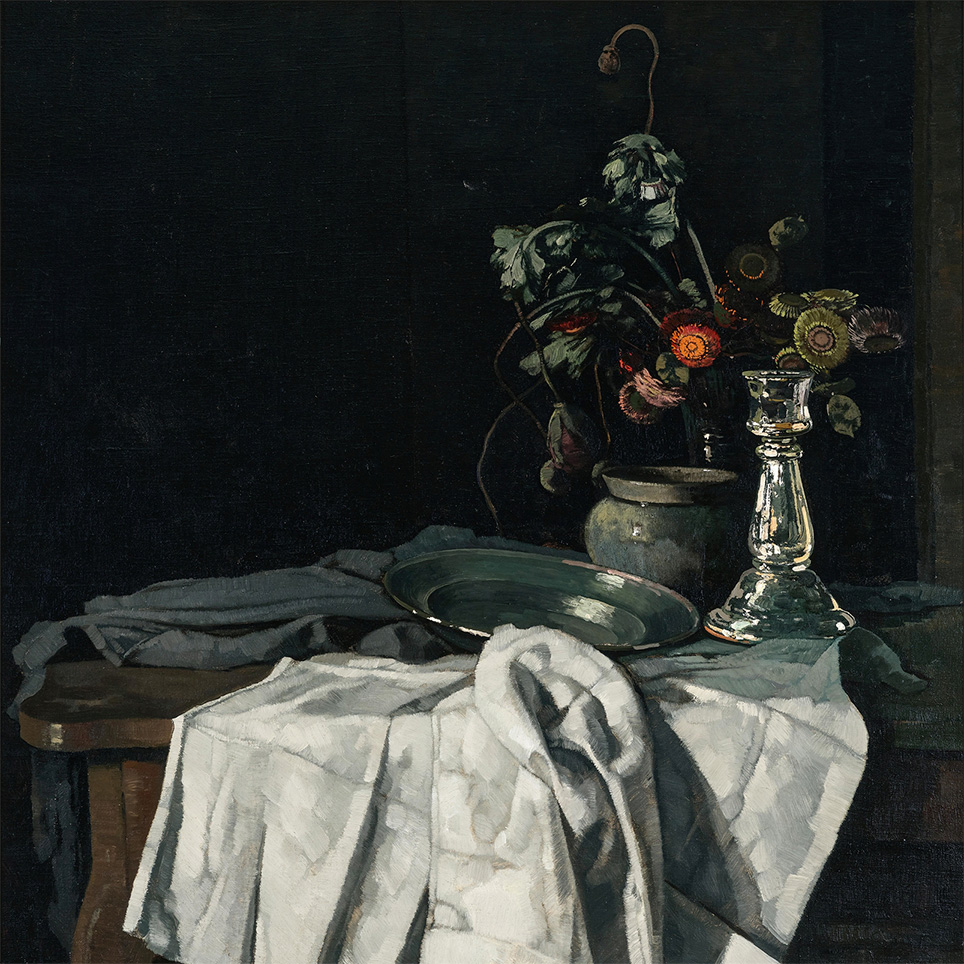
A journey through the history of table linen, between tradition and evolution.
From Antiquity to the present day, table linen has reflected the customs, refinement and social status of each era. Discover how tablecloths, napkins and other textiles have evolved over time, from medieval banquets to the elegant tables of the 19th century.
5 February 2025
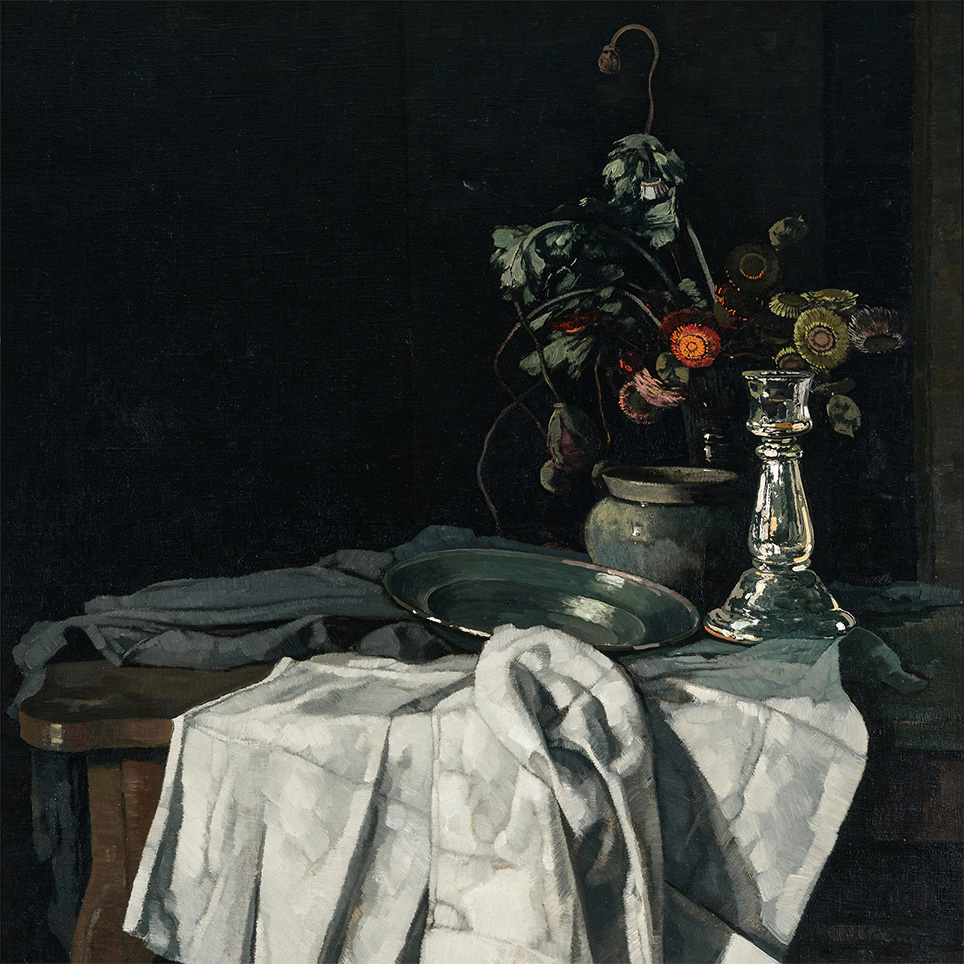
Stoitzner, Josef · 1935 · Still life with a white tablecloth and a silver candlestick · Artvee
1 · Introduction
1.1 · A brief introduction to the importance of table linen in culture and daily life
Empar and I are both curious minds. We’re always wondering about the origins of things. Now that we’re exploring the world of fabrics, we wanted to find out about the origins of table linen.
Table linen has always played an important part in everyday and ceremonial meals.
1.2 · Do you know when we started using tablecloths?
The origins of table linen go back to prehistoric times. Our earliest ancestors already covered their dining surfaces with coarse cloth or animal skins. To find out more about the origin and evolution of tablecloths, see the article Threads of history – Origin and history of tablecloths.
2 · Diving into Antiquity…
2.1 · Ancient Egypt
We can say that our inspiration comes from ancient Egypt, because table linen was already in daily use and was mainly made from linen, a fibre that grew in abundance on the banks of the Nile. Linen was particularly appreciated for its strength, durability and freshness, ideal for the hot climate of the region.
Women were the artisans responsible for weaving high-quality fabrics from extremely fine yarns. An entire profession developed around linen, gradually evolving towards increasingly complex techniques and dyes that enabled table linen to be used to represent cultural symbols.
At this time, tablecloths were used not only as practical domestic accessories, but also to embellish tables and show the wealth and status of guests.
2.2 · Ancient Rome
The Egyptian textile tradition spread throughout the Mediterranean, influencing the Roman Empire in particular. Table linen quickly became an essential element in demonstrating the opulence and refinement of this great empire. The Romans adapted and perfected Egyptian tablecloths by including other raw materials such as cotton and silk, the latter being imported from China via the Silk Road and rapidly becoming a luxury material.
The Romans perfected weaving techniques and added embroidery, often with gold and silver thread. The motifs depicted on tablecloths included geometric, floral and mythological scenes, reflecting the artistic and cultural influences of the time.
But when did individual napkins first appear?
The invention of the napkin dates back to ancient Rome. However, their use and shape differed greatly from those we know today.
The Romans began to use an individual napkin called a ‘mappa’ during meals. They were used in the same way as today’s napkins – to protect their clothes and wipe their hands and mouths – but it was the guests who brought them with them. They could then reuse them to wrap up leftovers and take them home (the first doggy bags?).
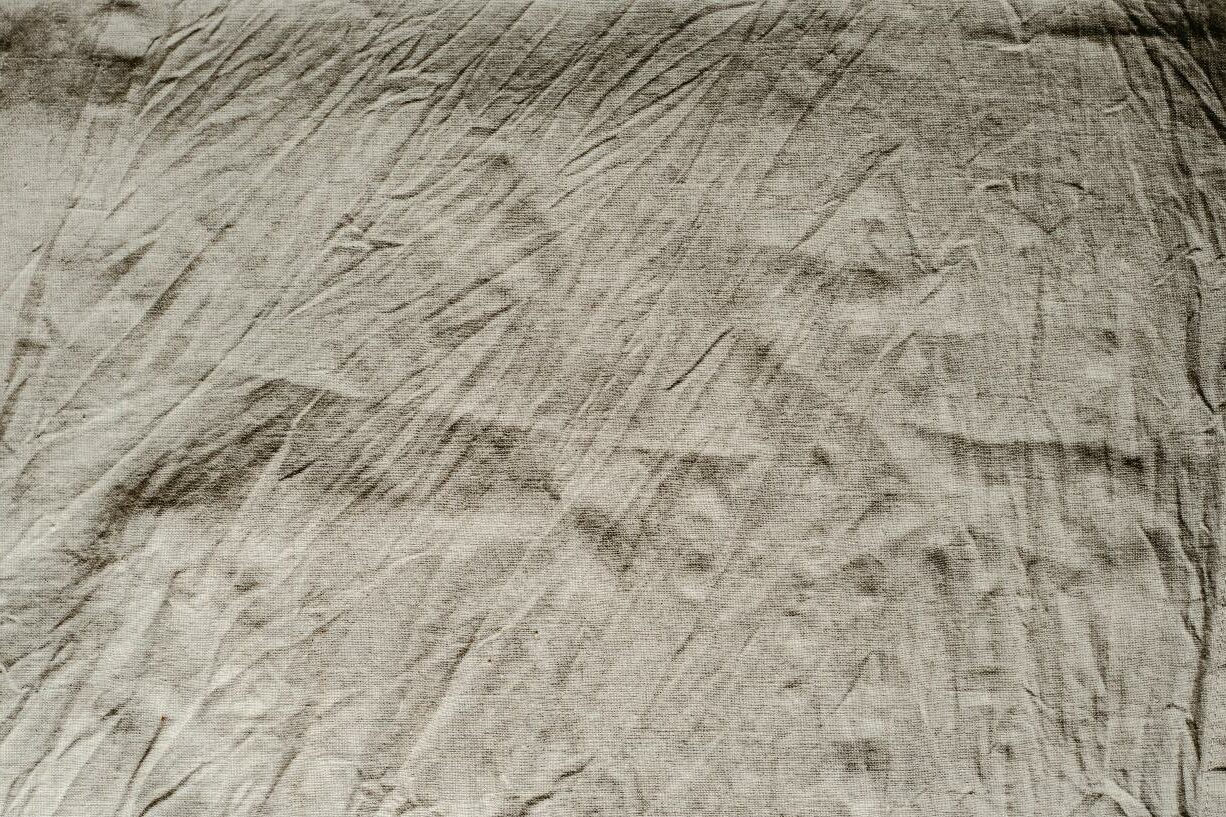
Old linen
3 · What happened in the Middle Ages?
3.1 · The High Middle Ages
With the fall of the Roman Empire, tablecloths and towels disappeared for centuries.
As the Middle Ages progressed, people began to use a long, shared cloth to wipe their hands, sometimes acting as a tablecloth at the same time.
3.2 · The end of the Middle Ages
It was not until the fifteenth century in France, under the reign of Charles VII, that individual napkins began to be used, as forks did not yet exist and people ate with their hands. The appearance of napkins reflects the improvement in table etiquette and refinement at the end of the Middle Ages.
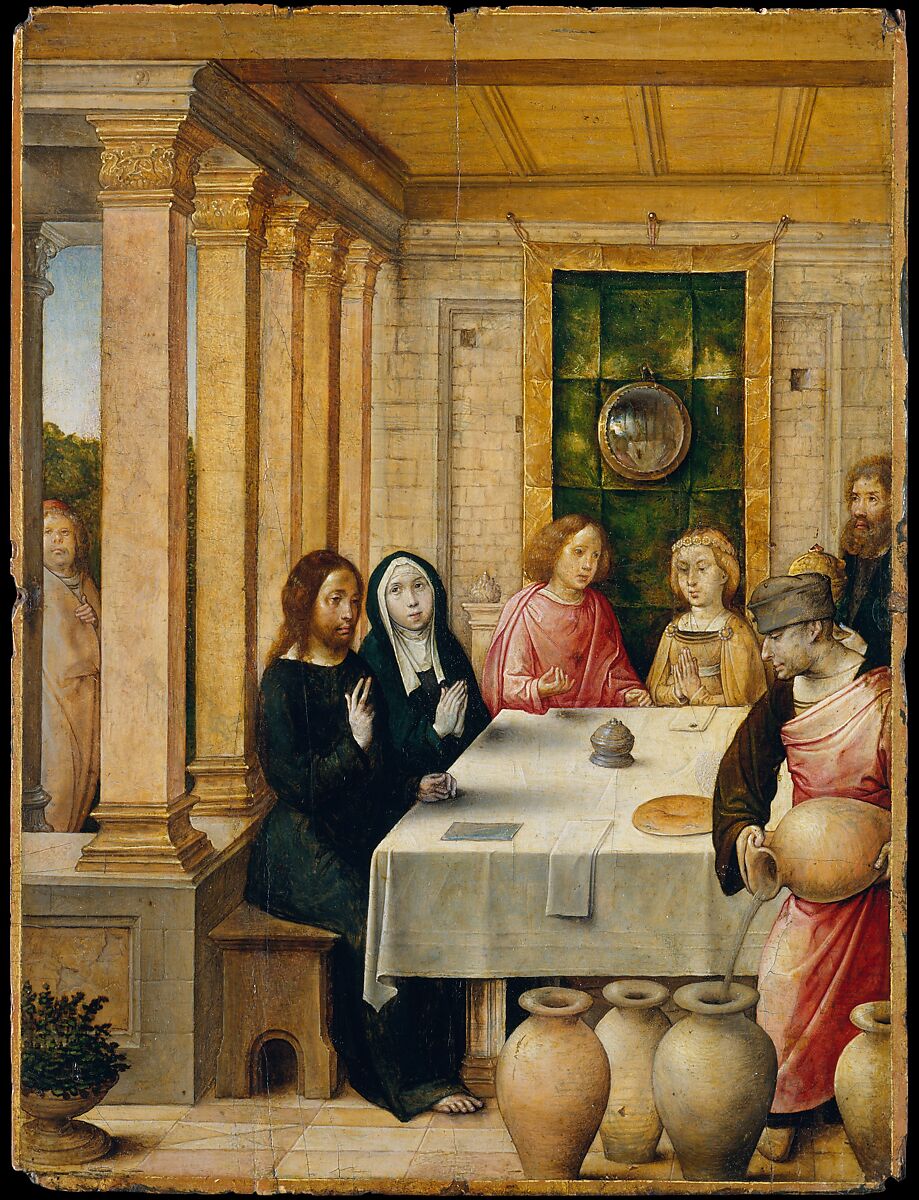
de Flandes, Juan · 1497 · The Marriage Feast at Cana · The MET
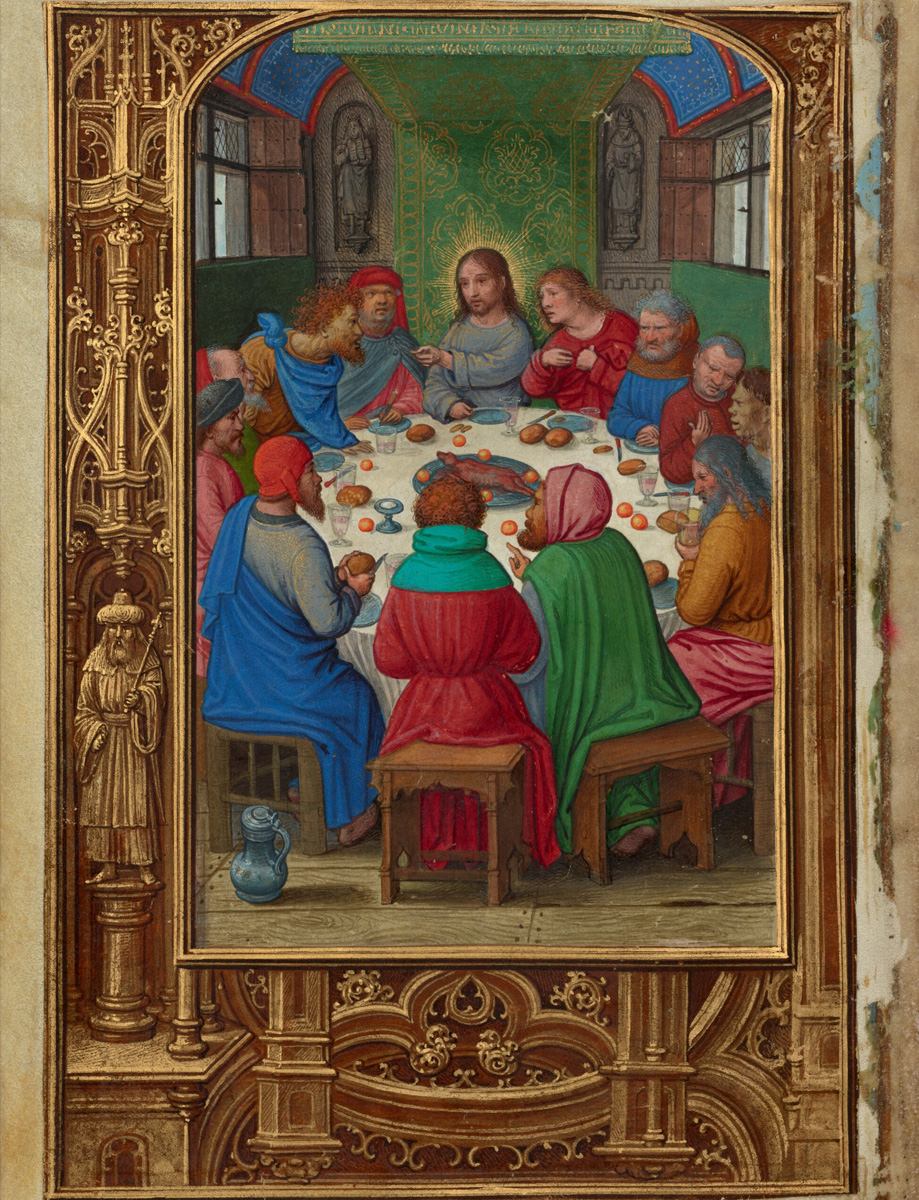
Bening, Simon · 1525-1530 · The Last Supper · Getty Mjuseum Collection
4 · L’évolution moderne
4.1 · Table linen as a decorative element in the Renaissance and Baroque periods
Over time, table linen evolved and became an essential element of table decoration, particularly during the Renaissance and Baroque periods. It was during this period that the use of cloth napkins tied around the neck became popular.
It was also at this time that personalisation was born, with napkins often decorated and scented with different essences for each guest. Napkins and tablecloths became symbols of social status, embroidered with the coats of arms of wealthy families.

Claesz Heda, Willem · 1635 · Banquet piece with mince pie · National Gallery of Art (EE.UU.)
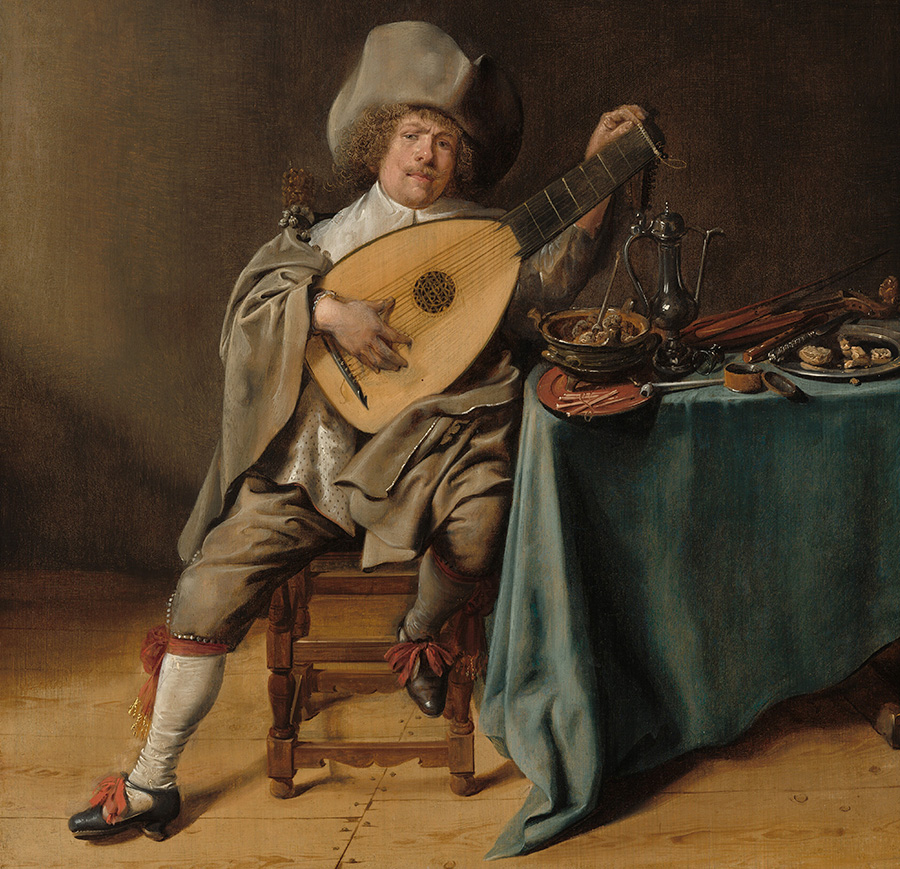
Fragment: Jan Miense Molenaer · 1637-1638 · Self-portrait as a lute player · National Gallery of Art (EE.UU.)
4.2 · The art of napkin folding in the 17th century
The art of napkin folding was born in the 17th century. From this period date a multitude of treatises detailing how to achieve almost impossible folds. Among them, Mattia Giegher, who collected and represented the complex techniques of napkin folding, stands out.
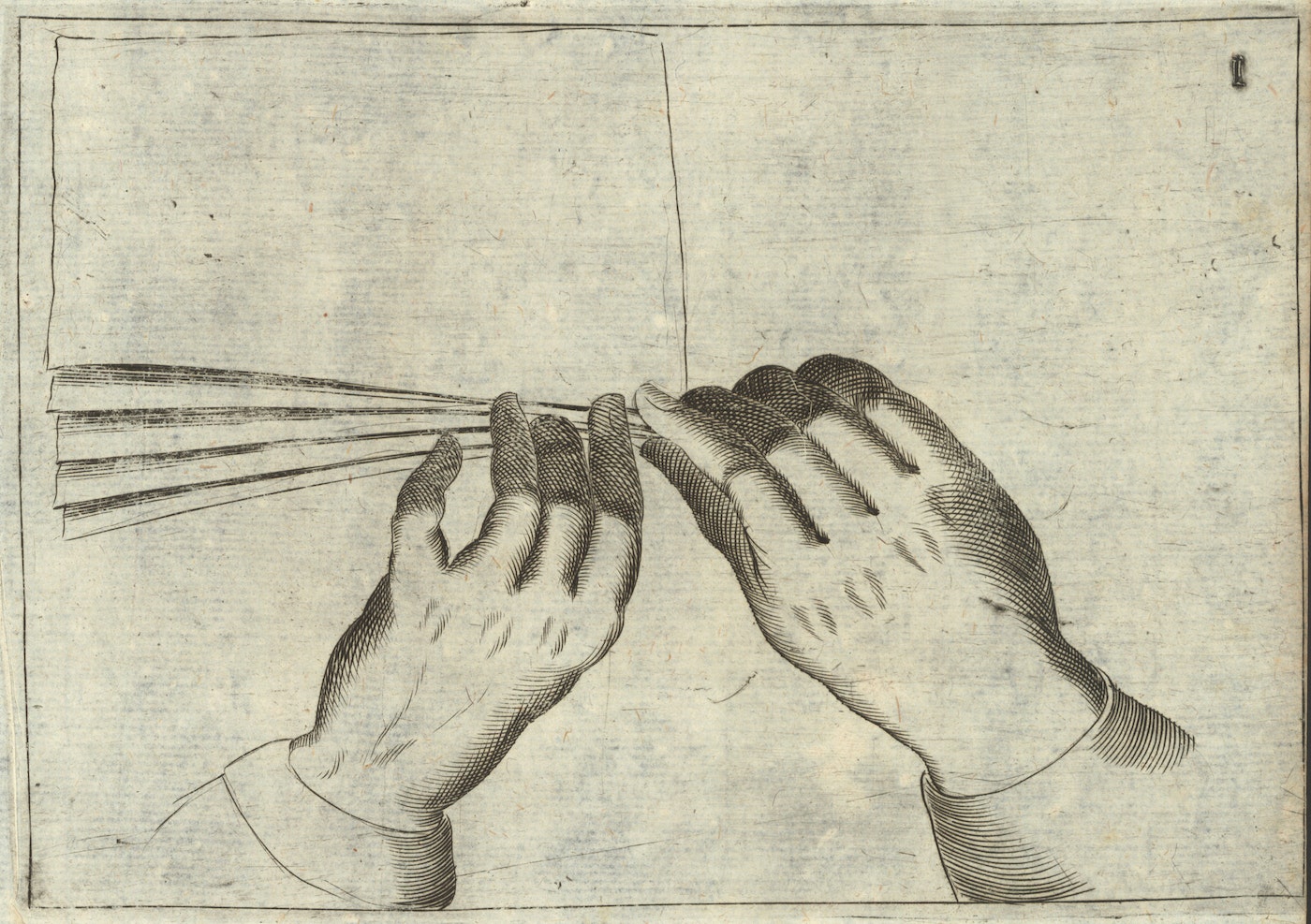
1 · Napkins Sculptures · Mattia Giegher’s Treatise on Napkin Folding (1629) · Rijksmuseum
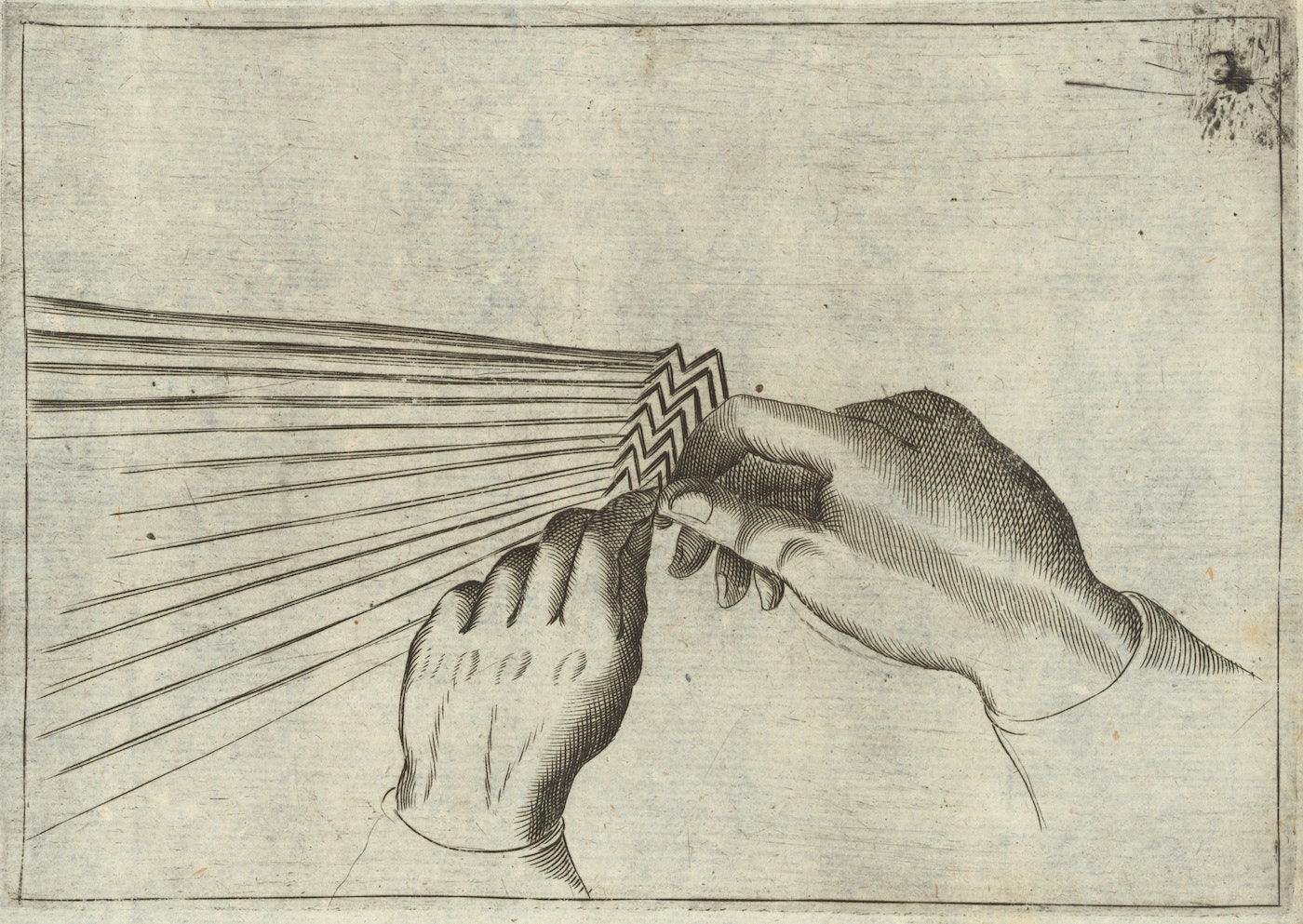
2 · Napkins Sculptures · Mattia Giegher’s Treatise on Napkin Folding (1629) · Rijksmuseum
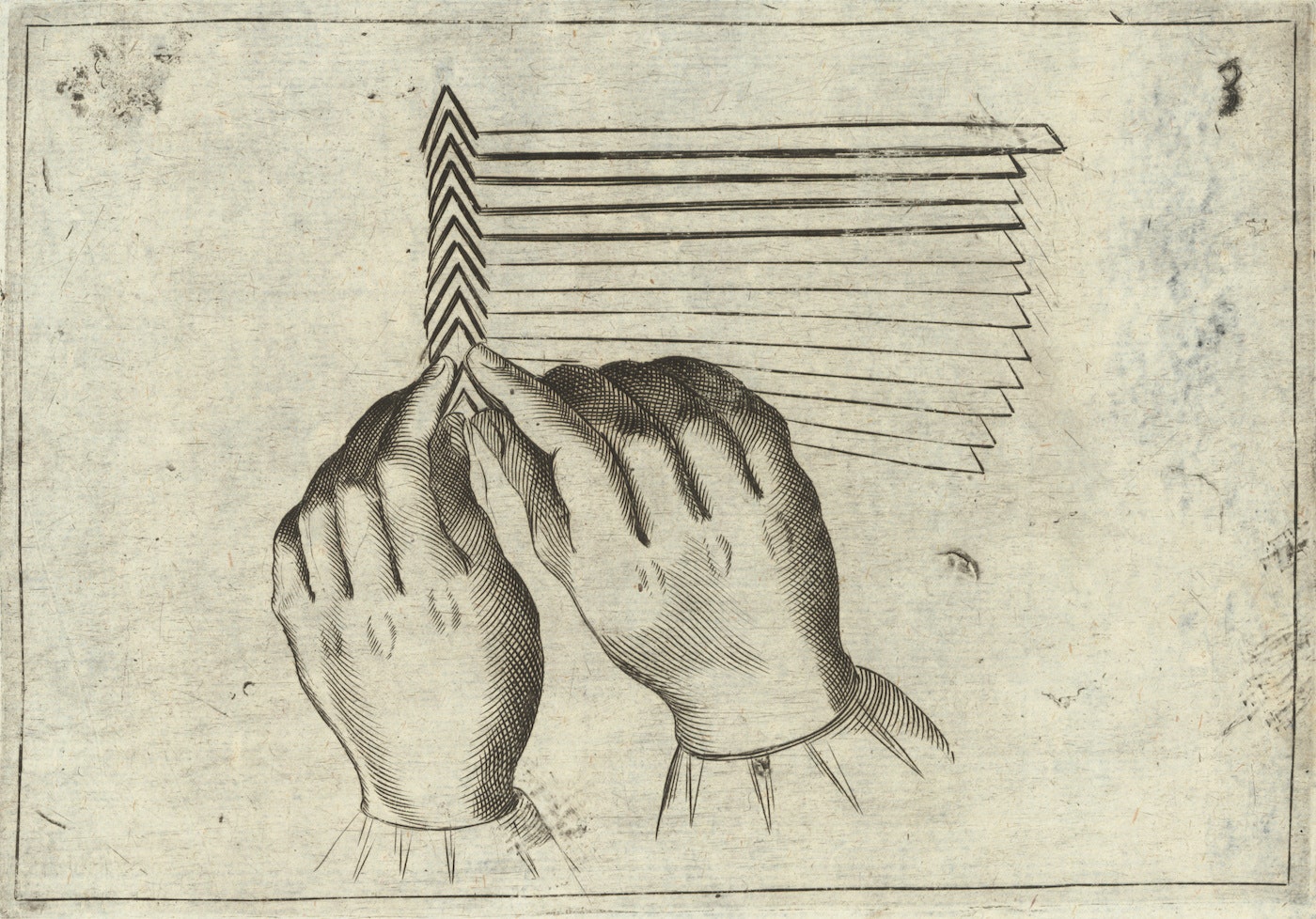
3 · Napkins Sculptures · Mattia Giegher’s Treatise on Napkin Folding (1629) · Rijksmuseum
4.3 · 18th and 19th centuries, Modernity
In the eighteenth and nineteenth centuries, with the advent of the industrial revolution and advances in textile techniques, table linen was democratised and became accessible to a wider public, becoming a common item in most homes.
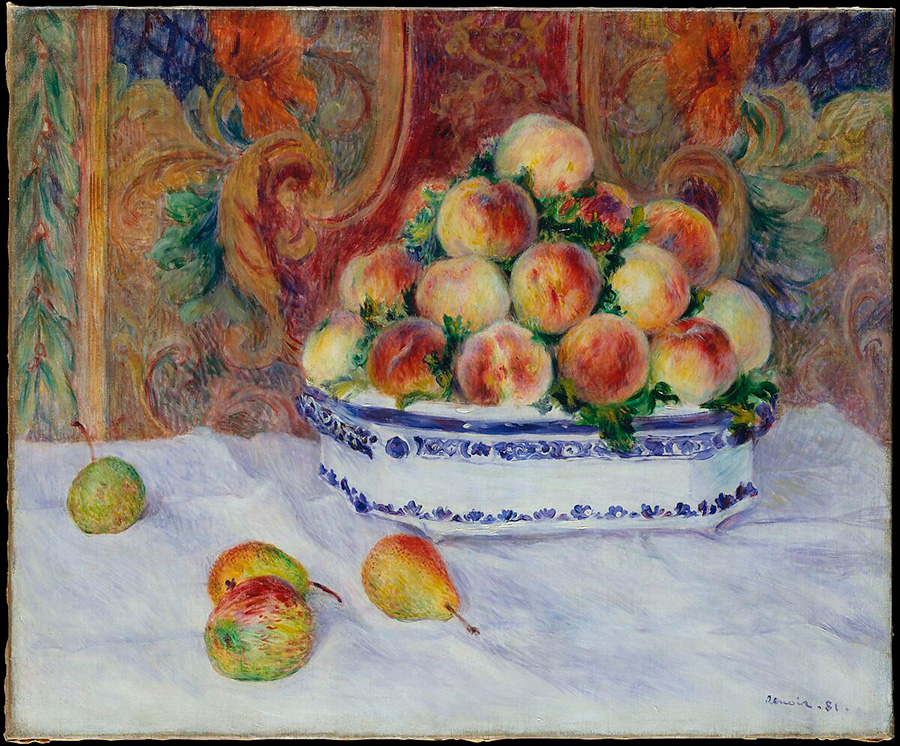
Renoir, Auguste · 1881 · Still Life with Peaches · The MET
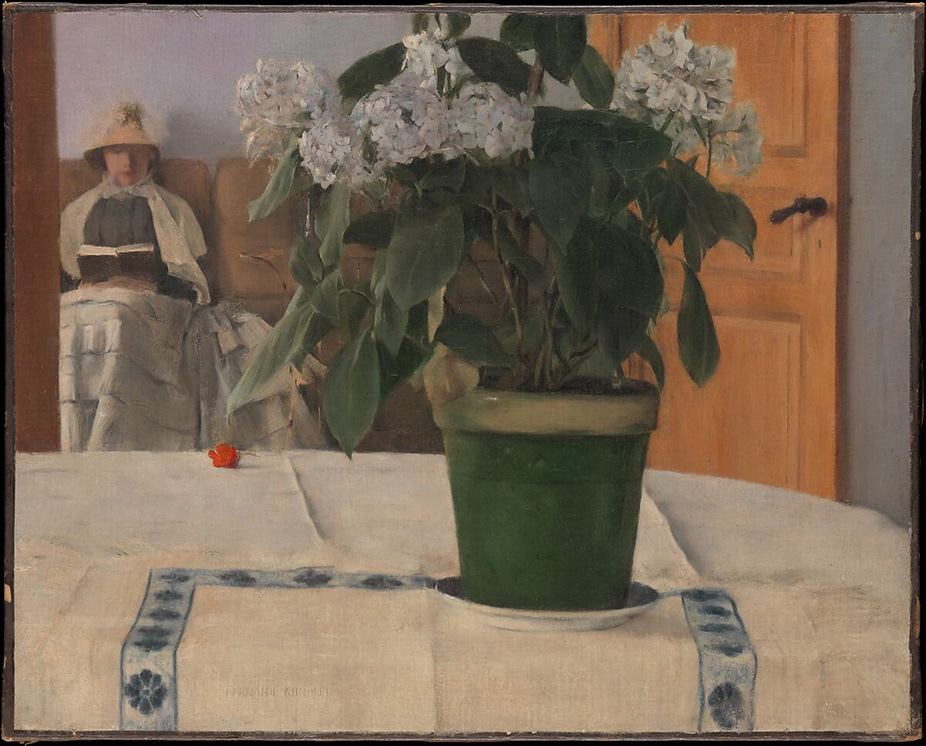
Khnopff, Fernand · 1884 · Hortensia · The MET
4.4 · 20th century
In the 20th century, napkins were still associated with tablecloths. Around 1930, lighter shades began to be used and, after 1945, napkins became smaller.

Borrebach, Hans · 1940 · Man en vrouw aan een tafel · Rijksmuseum
5 · And today?
5.1 · The great diversity of table linen today
Today, the variety of table linen on offer is almost infinite. Technical innovations, global influences and a wide range of aesthetics give table linen a multitude of possibilities. Contemporary trends in textile table linen are moving towards sustainability, natural and eco-friendly materials and advanced weaving technologies.
5.2 · Our sustainable and artistic approach
In this context, L’atelierme, inspired by the rich history of table linen, seeks to restore the fabric napkin to its fundamental role in the art of sublimating everyday life.
We strive to enhance the value of natural fabrics by bringing an artistic aesthetic to the everyday table. We want every meal to be an aesthetic and sensory experience, with elegance and good taste in every detail.

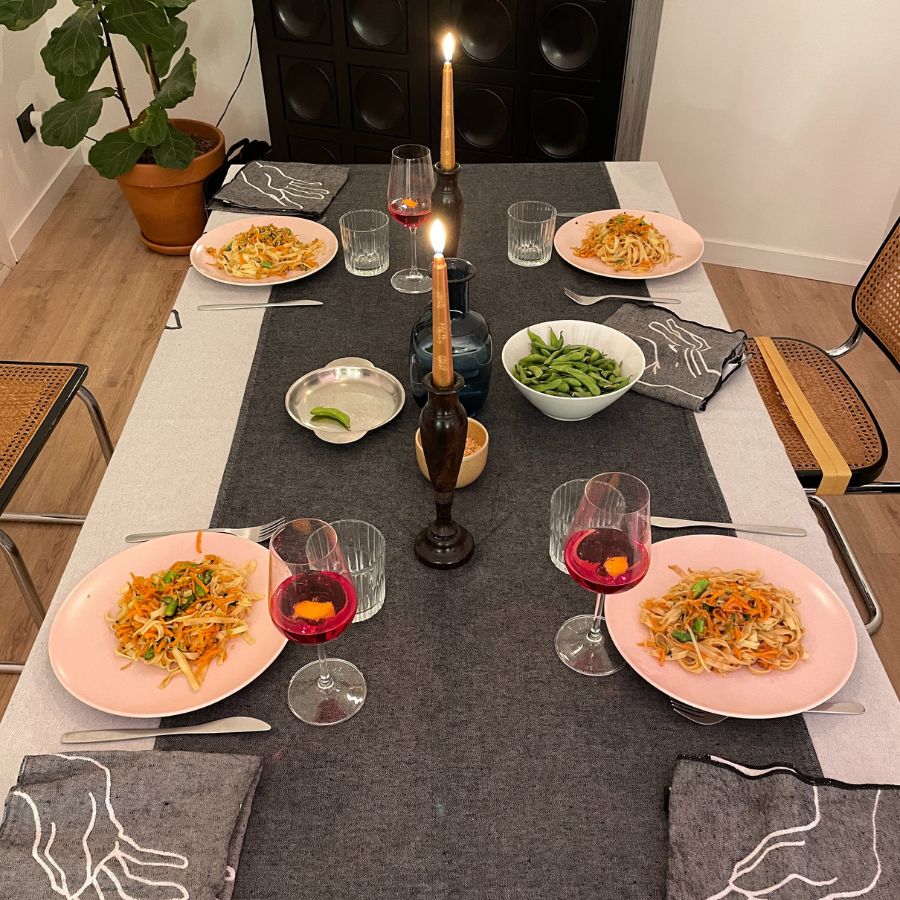
Tablecloth from the Manos collection · L’atelierme
Par Maria Palazón





Leave a Reply